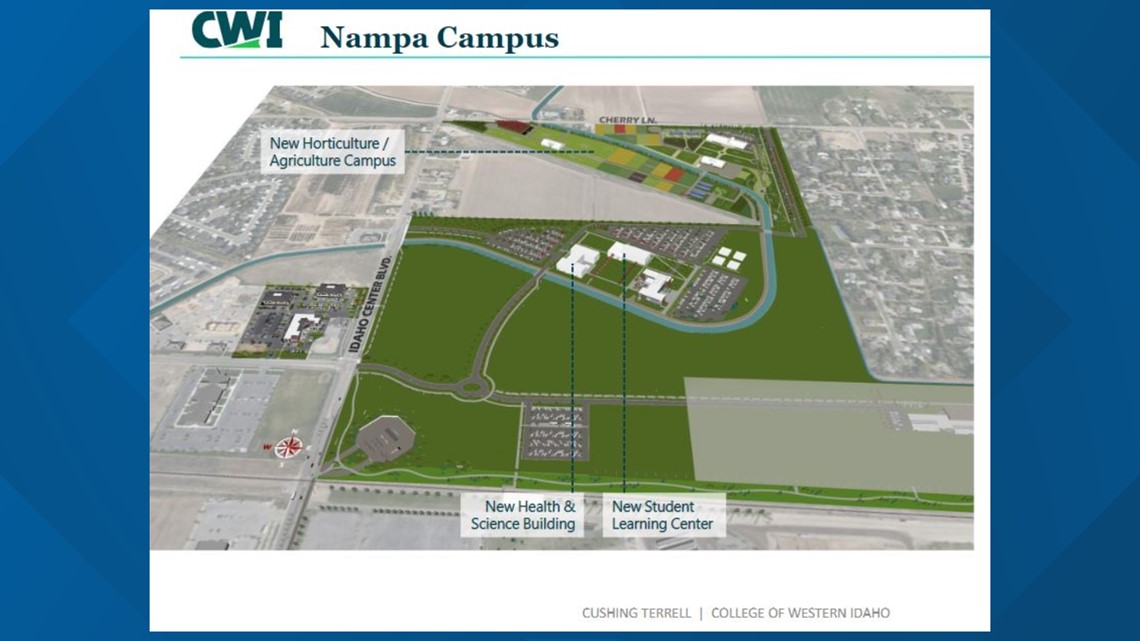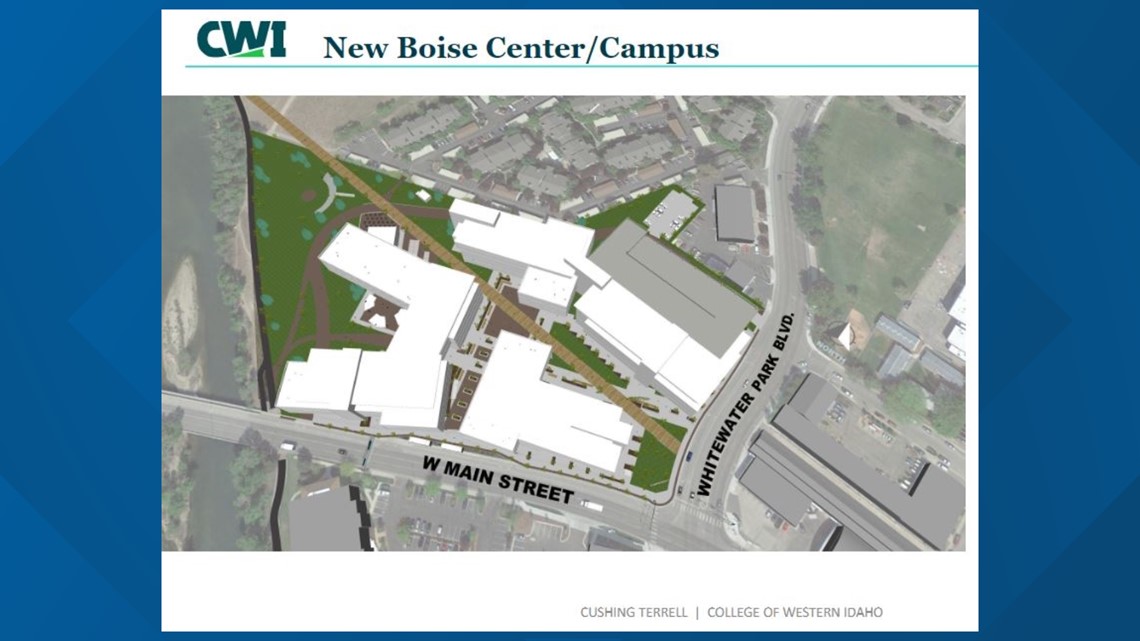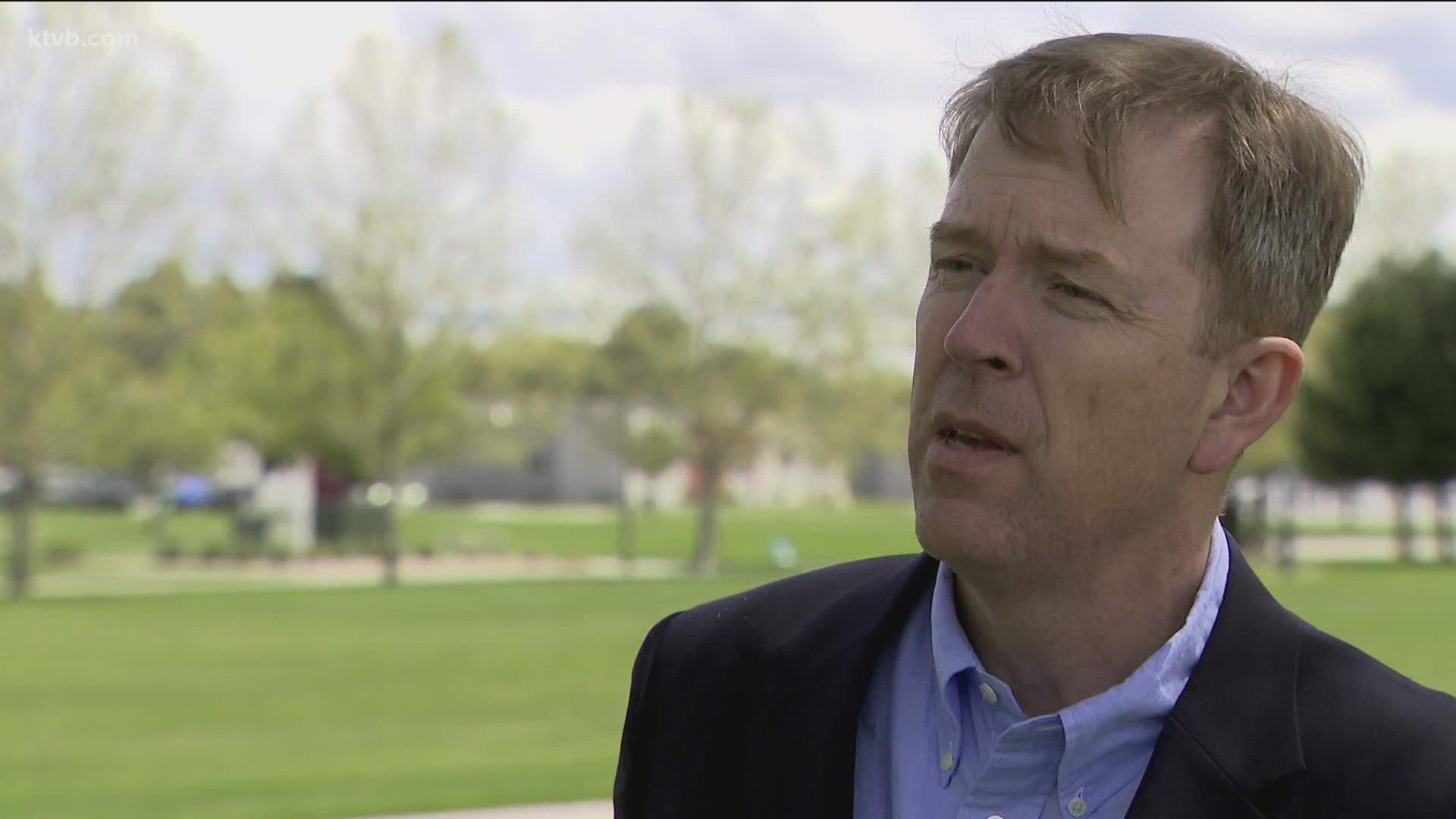NAMPA, Idaho — The College of Western Idaho is moving forward with a plan that includes new buildings on the main CWI campus in Nampa and developing more than 10 acres of property on the west end of downtown Boise that has sat vacant since CWI bought it.
The CWI Board of Trustees on April 14 voted unanimously in favor of the Campus Visioning Plan. That plan calls for consolidating the college into two primary campuses in Nampa and Boise, supported by three "strategic centers": the Micron Education Center and Aspen Creek Complex in Nampa, and the Canyon County Center in Caldwell.
The vision for the existing main campus in Nampa, located near Idaho Center Boulevard and Cherry Lane, includes a new Health and Science building, a new student learning center, and a horticulture/agriculture campus. According to CWI's plan, expanded student support services would be consolidated into the new student learning center.


The plan for the Nampa campus also envisions a quad "to enhance the student collegial experience."
"We have a lot of facilities that are across Ada and Canyon counties. We are going to see if we can actually pull some of that into our facilities here that will be built as a way of offering our students more of a student experience," said CWI President Gordon Jones in an interview with KTVB's Katija Stjepovic.
In Boise, CWI currently leases space at the Black Eagle Center business park near Overland and South Maple Grove roads.
"We have leased facilities, we have partners in the community from the facilities that we are currently renting, but what we are seeing across these counties is rising costs. Because of the complexity that is involved, the amount of dollars, we want to be good stewards of the resources that we have," Jones said.
The college owns 10.33 acres on the west end of downtown Boise, at Main Street and Whitewater Park Boulevard, known to many as the old Bob Rice Ford dealership site. After the dealership left the property, part of the site was used as headquarters for the 2009 Special Olympics World Winter Games.
CWI purchased the downtown property in 2015 for $8.8 million -- more than twice the assessed value of about $4 million. As a public entity, CWI does not pay property taxes on that land. After purchasing the land, the college had planned to build a 600,000 square-foot campus with an academic professional center on that property. However, a $180 million bond put before voters in Ada and Canyon counties failed by less than 200 votes. It would have funded expansion at the Nampa campus as well as development of the Boise property.
Since the unsuccessful bond election, CWI's downtown property has sat vacant with no plans.
CWI’s strategic direction now includes investing in that site and developing a mixed-use project, “utilizing a developer partner.”
"We love the location, we have a vision for where our private developer may come alongside, and we are really excited to see how that brings most likely our cyber, tech, business-type thematic, given some of the headquarters that are down in Boise and some of the partners," Jones said.
Specifics on the uses and specifics on a developer partner have not been named. Along with college buildings, the CWI visioning plan states complementary uses are “contemplated” for the Boise site to create additional value for CWI students and faculty.


“I am thrilled to work with our Board of Trustees as CWI moves into the next phase of campus development – consolidating and expanding campus services and programming will ensure the College remains an innovative leader in delivering high-quality, affordable, and accessible opportunities to more students,” Jones said in a news release after the CWI trustees approved the visioning plan in April.
Jones became president of CWI in January 2022, succeeding Bert Glandon, who retired after serving as CWI's president since 2009.
To fund implementation of the visioning plan, CWI plans to use $15 million in state funding for the Health and Sciences building, as well as money from the CWI Development Fund, donor funds and Certificate of Participation funding, which would involve a lease-financing agreement.
CWI’s next steps will focus on implementing the strategic direction and working to create timelines to assist in the subsequent phases of planning.
CWI has been working with the consulting, architectural, engineering and design firm Cushing Terrell on the Campus Visioning and Planning process, which included a survey in the fall of 2021. Of the 1,269 responses, one-third came from faculty and staff, more than 38 percent came from students. The remainder came from alumni, community members, educational partners, business partners and elected officials.
When asked what they thought should be CWI's top planning priorities, the top answers selected were, in order, ensuring quality training for highest job demands; additional hands-on, experiential learning spaces; and enhancing flexibility and maximizing utilization of existing space. Consolidation into two primary locations, a key component of the visioning plan, was the number-two answer among faculty and staff.
"The growth of this valley means more jobs, more skilling, more re-skilling. We know that in health care, in our agriculture, in all the trades that we do, and we don't believe long term that there should be any reason to pause on what we are doing," Jones said.
Watch more Local News:
See the latest news from around the Treasure Valley and the Gem State in our YouTube playlist:

